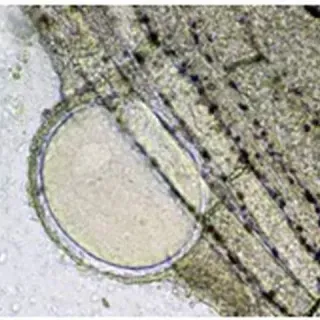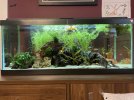Hi all - I’ve had this orange flash for about 1 year and recently he’s developed some pigmented spots on his fins that almost look like blisters. I got some reasonable shots attached and would emphasize they have a bubble-like texture. They are on every fin except pectoral and pelvic, but most on caudal. Fish seems totally fine / unbothered and it’s been this way for a couple of months. Any thoughts?
Notes:
Water quality: pH 7.4, 175 ppm hardness, ammonia and nitrites zero, nitrates just north of zero, temp 77


Notes:
Water quality: pH 7.4, 175 ppm hardness, ammonia and nitrites zero, nitrates just north of zero, temp 77

